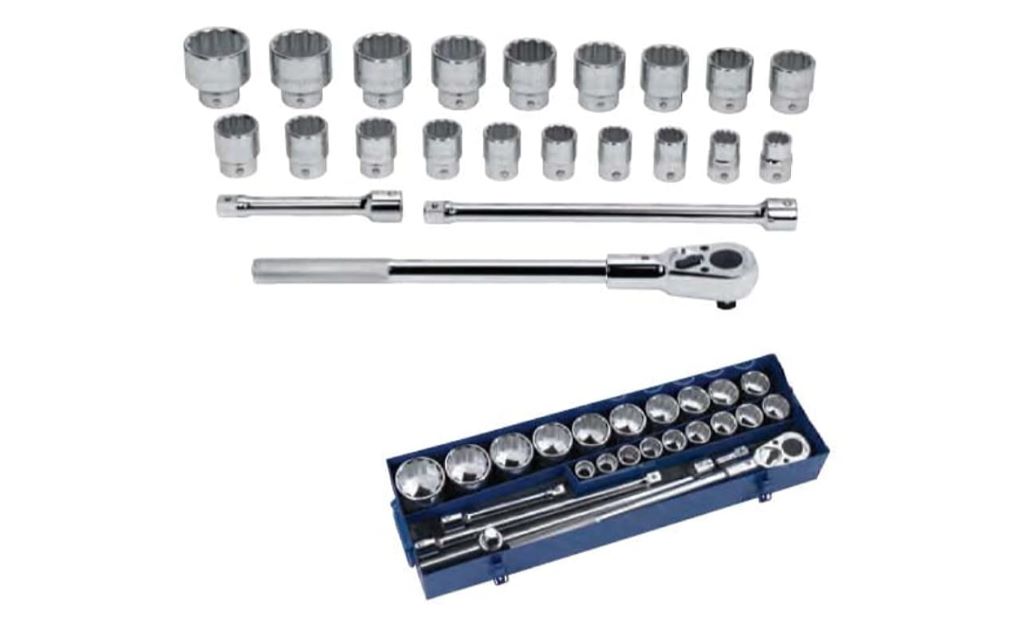Williams socket sets are a staple in professional garages and a worthy investment for DIY enthusiasts. Their reputation for quality and durability makes them ideal for tackling various automotive repairs. This guide will walk you through essential repairs using your Williams socket set, emphasizing safety and efficiency.
Why Williams Socket Sets?
Before we dive into repairs, let’s highlight what sets Williams apart:
- Strength and Longevity: Constructed from high-grade steel, these sockets withstand the torque and pressure of automotive work, reducing the risk of rounding or breakage.
- Precision Fit: The sockets are engineered with tight tolerances, ensuring a secure grip on fasteners and minimizing the chance of stripping bolt heads.
- Versatility: Williams offers a wide range of socket sets, from standard SAE and metric sizes to specialty sets designed for specific tasks like brake repair or suspension work.
- Organization: Most sets come with durable cases that keep your tools organized and protected.
Essential Repairs You Can Tackle with Williams Socket Sets
1. Oil Changes
- Tools: Ratchet, appropriate socket size for your drain plug, oil filter wrench (if needed)
- Steps:
- Warm up the engine for a few minutes.
- Safely jack up the car and place it on jack stands.
- Locate the drain plug, place a drain pan underneath, and loosen the plug with your socket and ratchet.
- Allow the oil to drain completely.
- Replace the drain plug, tightening it to the manufacturer’s recommended torque.
- Remove the old oil filter and install the new one.
- Lower the car, add new oil, and check the level.
2. Replacing Spark Plugs
- Tools: Spark plug socket, extension, torque wrench
- Steps:
- Disconnect the battery for safety.
- Locate the spark plugs.
- Remove the ignition coil or wire boot (if applicable).
- Using your spark plug socket and extension, loosen and remove the old plug.
- Inspect the spark plug wire for damage.
- Install the new spark plug, tightening it to the correct torque.
- Repeat for each cylinder.
3. Brake Pad Replacement
- Tools: Socket set, C-clamp or brake piston tool, torque wrench
- Steps:
- Loosen the lug nuts on the wheel before jacking up the car.
- Safely raise and support the car.
- Remove the wheel.
- Remove the caliper bolts using your socket set.
- Carefully pry the caliper off the rotor.
- Compress the brake piston using a C-clamp or specialized tool.
- Remove the old brake pads and install the new ones.
- Reinstall the caliper, tightening the bolts to the correct torque.
- Repeat for the other side.
Removing Catalytic Converter: Comprehensive Look at Alternatives
Safety First!
- Always wear safety glasses: Protect your eyes from flying debris.
- Use jack stands: Never work under a car supported only by a jack.
- Consult your car’s manual: For specific torque specifications and repair procedures.
- Don’t overtighten: Overtightening bolts can lead to damage. Use a torque wrench when specified.
Additional Tips of Maintenance with Williams Socket Sets
- Invest in a good quality torque wrench: This will ensure you’re tightening bolts to the correct specifications, avoiding damage.
- Keep your socket set organized: This saves time and frustration when searching for the right tool.
- Clean and lubricate your sockets: A light coating of oil can prevent rust and ensure smooth operation.
- Consider expanding your set: Specialty sockets for brake bleeding, suspension work, or other tasks can be very handy.
Related: Junkyards in San Diego: Hidden Treasures and Lasting solution
Important Note: While many repairs can be done at home, some are best left to professionals. If you’re unsure about a repair, consult a qualified mechanic.
Conclusion
A Williams socket set is a valuable tool for any car owner. By following this guide and taking proper safety precautions, you can confidently tackle many common car repairs, saving time and money.






